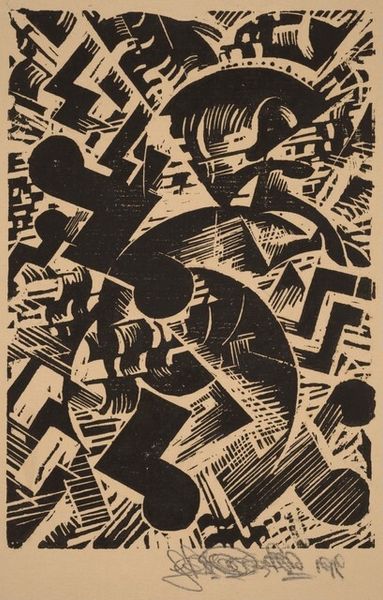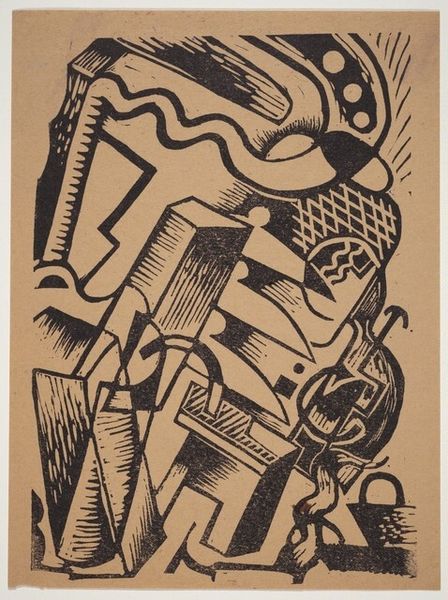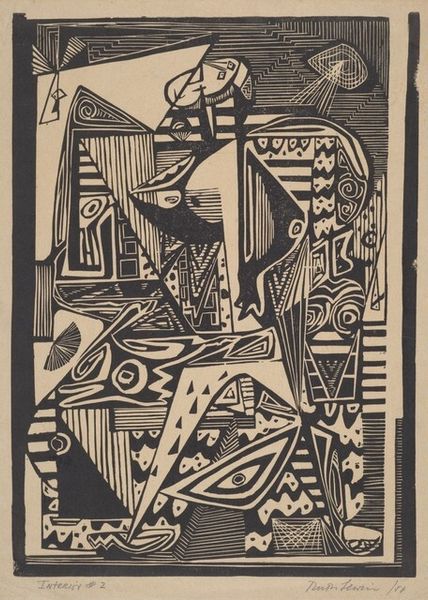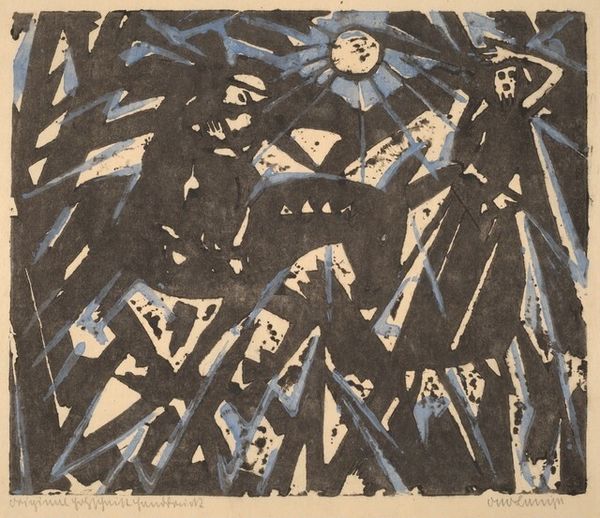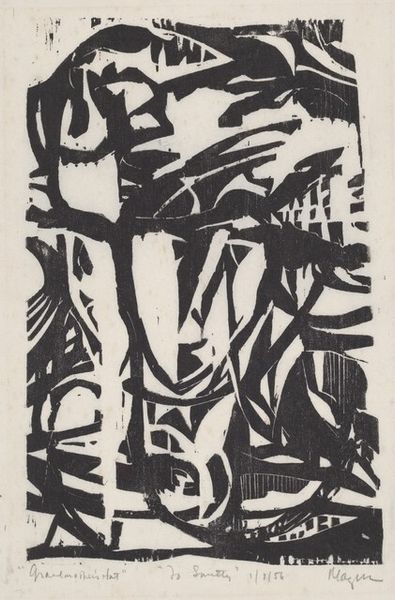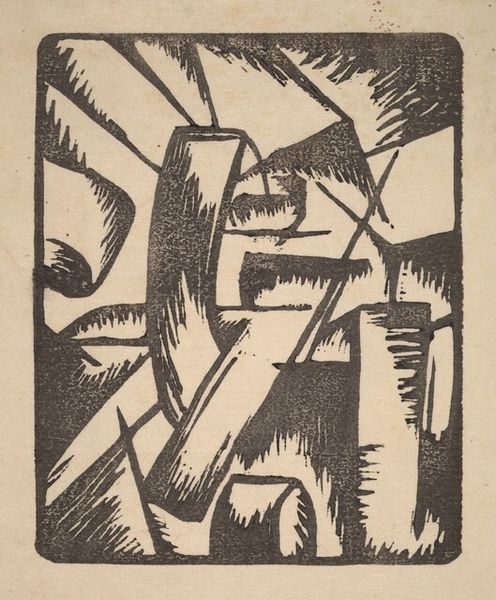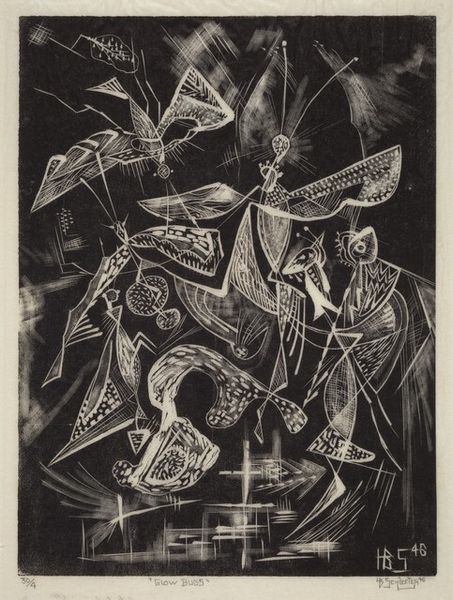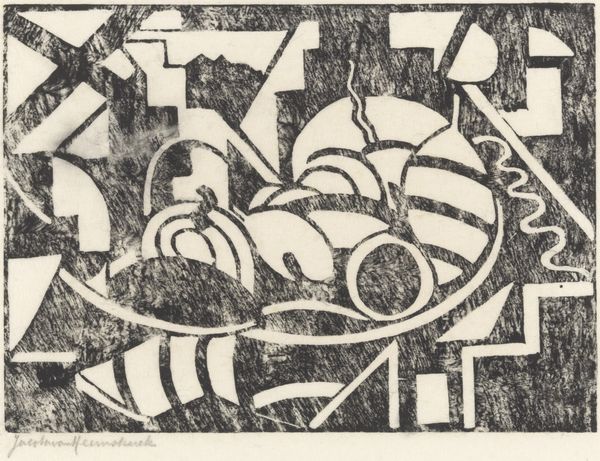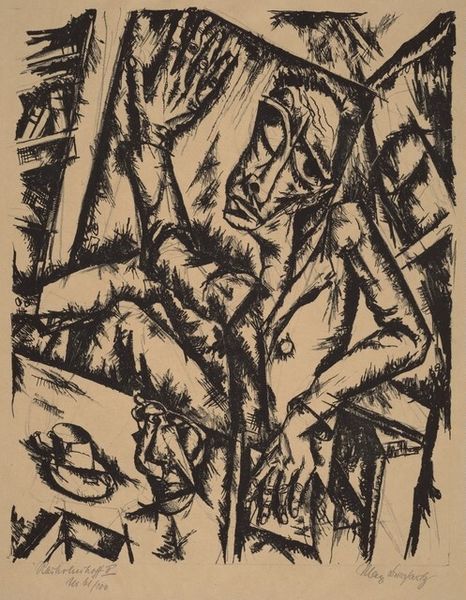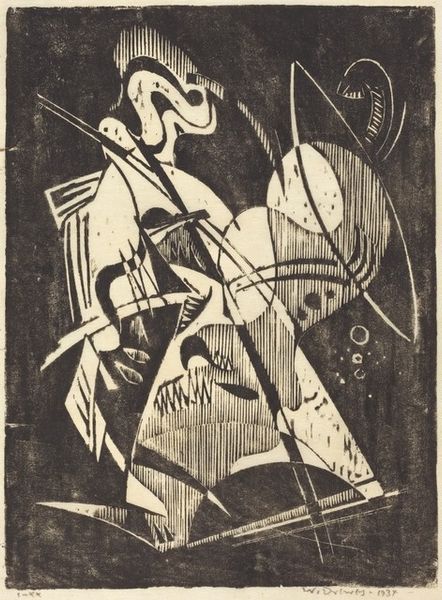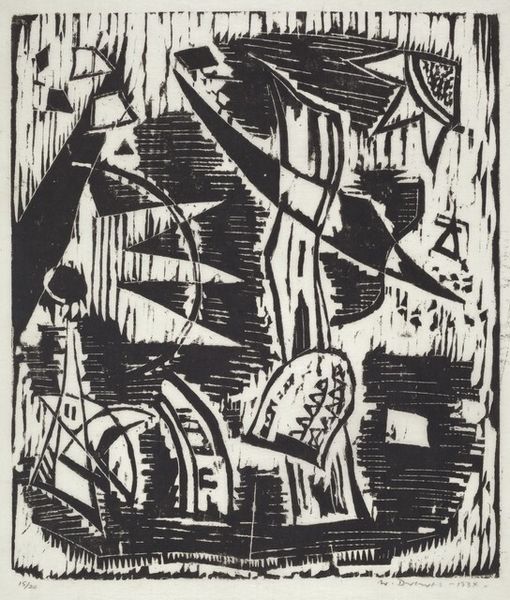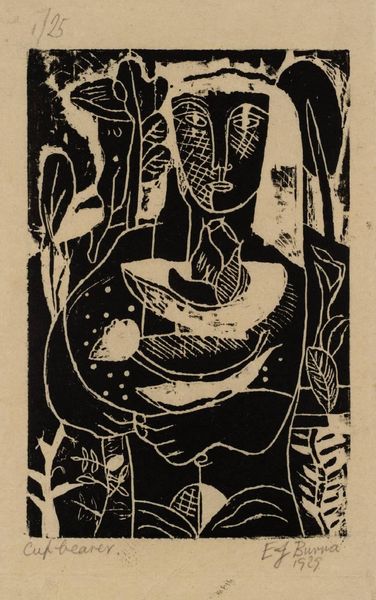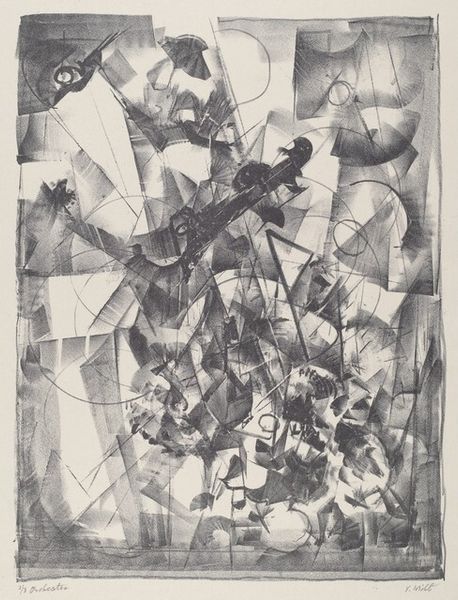
graphic-art, print, woodcut
#
graphic-art
# print
#
german-expressionism
#
linocut print
#
geometric
#
woodcut
#
abstraction
#
monochrome
Dimensions: plate: 34 x 31.5 cm (13 3/8 x 12 3/8 in.) sheet: 60 x 45.2 cm (23 5/8 x 17 13/16 in.)
Copyright: National Gallery of Art: CC0 1.0
Curator: Before us is "Komposition," a 1919 print by Johannes Itten. It’s a piece that just vibrates with energy, a symphony of black and white. Editor: My first thought is the starkness of it. High contrast, immediate. Looks almost violently energetic. Is it a woodcut or linocut, perhaps? You can feel the artist's hand directly in the carving. Curator: Indeed, it’s a linocut print—or possibly a woodcut. Knowing Itten’s Bauhaus connections, the focus on materiality is no surprise. He was deeply invested in the spiritual properties of materials, a kind of mystical understanding. Editor: Absolutely, and it's fascinating how that interest in the material then translates into a broader cultural moment. Think about the availability of linoleum, the democratization of printmaking that’s implicit in that choice of material... This wasn't marble, right? Curator: Definitely not! It's about accessibility, but also the unique texture and marks achievable. Look how the deep blacks dominate. The composition seems chaotic, but there's a hidden geometry, wouldn’t you say? A search for underlying order. Editor: Order, yes, but fighting against the inherent messiness of the material and process. It’s expressive of its making; we can sense the pressures, the cuts, the resistance. The image seems almost secondary to the physical act. And consider the labor... Curator: Labor, exactly. Each line, each shape, carved by hand. It speaks of patience and precision, and a deliberate approach. This feels almost ritualistic, certainly not mass produced for a quick sale. Editor: It embodies a particularly radical vision—of the possibilities of both the spiritual and physical in abstract form, one tied inextricably to material reality. It moves us past purely aesthetic value, challenging us to ask questions about process, origin, distribution. Curator: What I find lingering within this image is something timeless – almost musical – about it, like looking into a wellspring. Editor: For me, its power resides in how the materials are not transcended, but amplified. A celebration of labor, in a way. A vital artifact indeed.
Comments
No comments
Be the first to comment and join the conversation on the ultimate creative platform.
